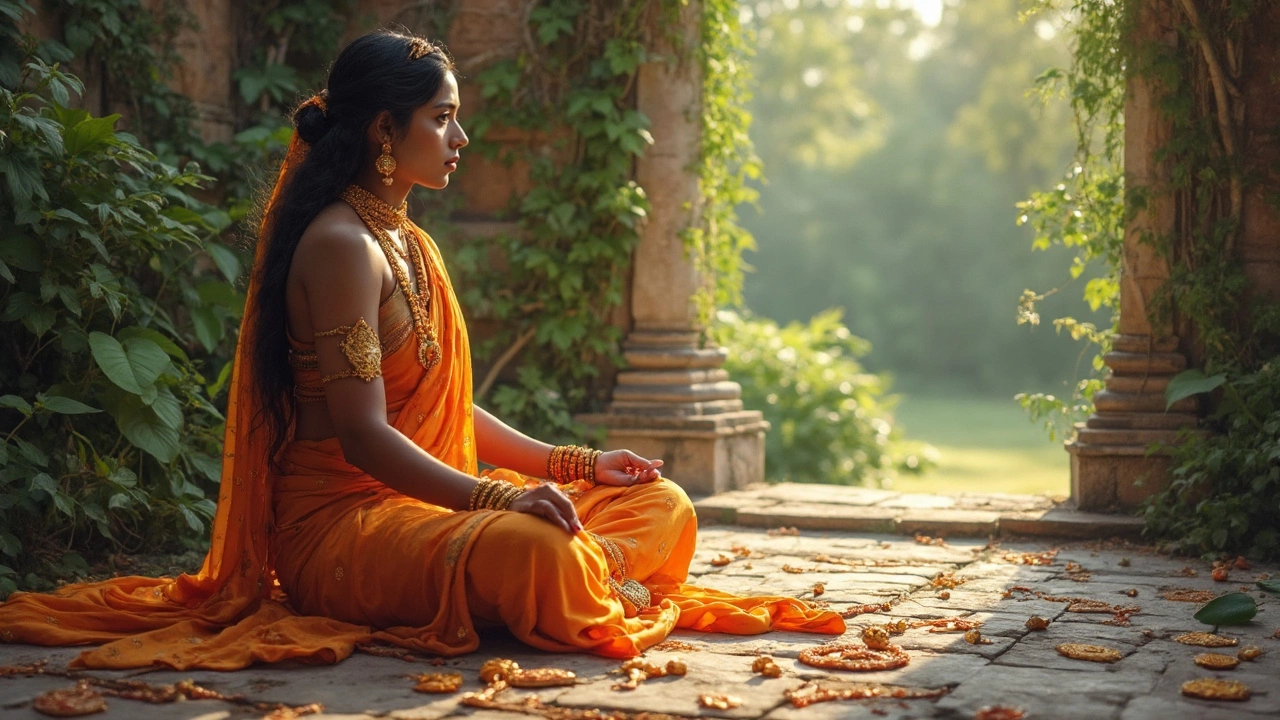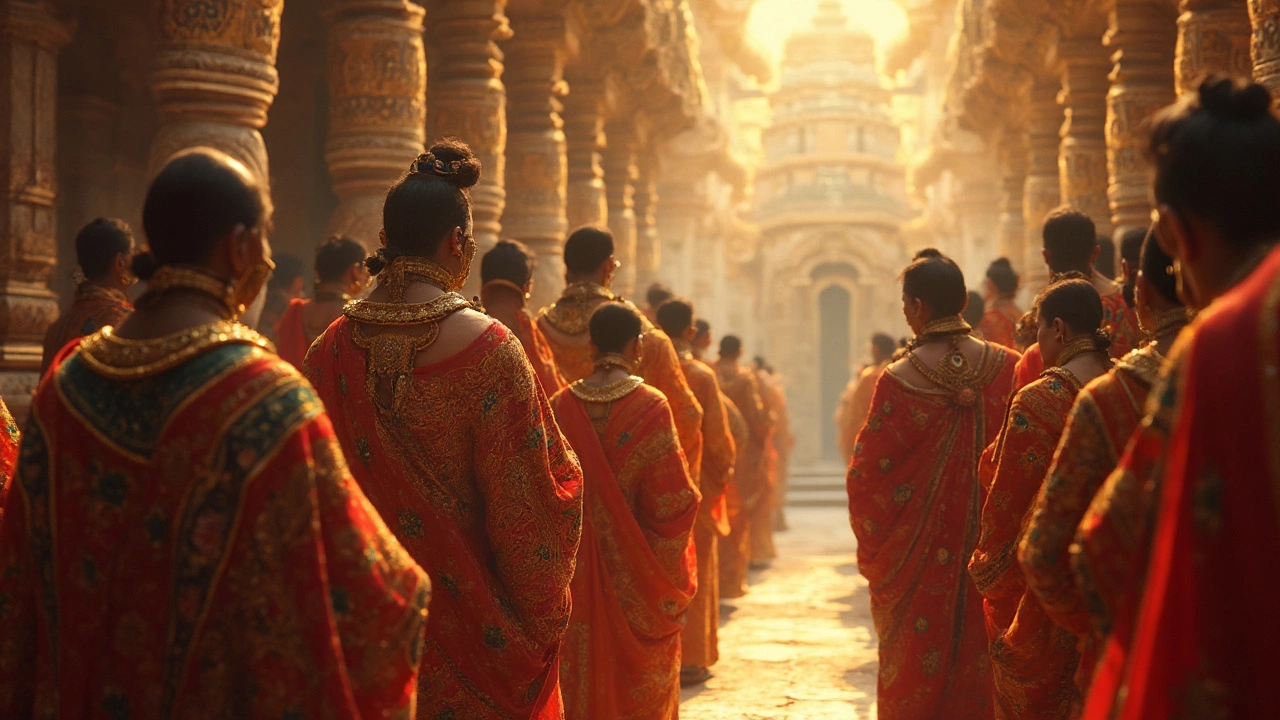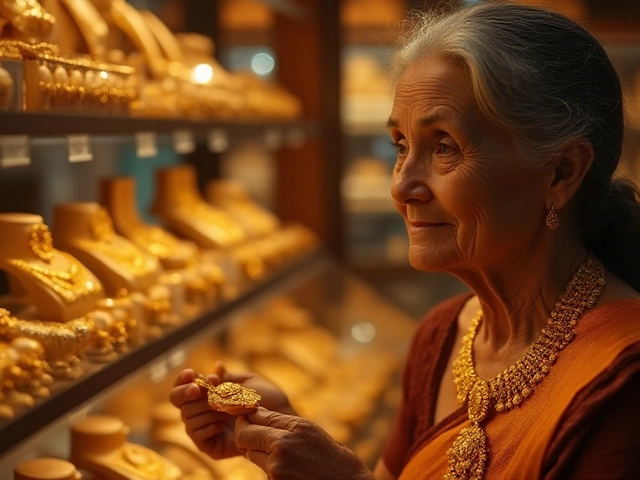Ever wonder why Vedic jewellery is so revered in temples? It's not just about decoration—there's a whole world of tradition and spirituality behind each piece. Dating back centuries, Vedic jewellery isn't your everyday accessory; it's tied deeply to spiritual practices and temple rituals.
At its heart, Vedic jewellery combines exquisite artistry with symbolic significance. Imagine intricate designs, handcrafted with devotion. Craftsmen back in the day aimed to reflect divine energy in each creation. It's why these pieces often depict motifs like lotus flowers, which symbolize purity and enlightenment.
But here's where things get intriguing—it isn't only about looks. Vedic jewellery is believed to harness and radiate positive energy, making it an essential part of temple ceremonies. Whether you're drawn to its beauty or its spiritual heritage, understanding these adornments can deepen your appreciation and maybe even inspire a unique way to incorporate a touch of the divine into your modern look.
- Origins of Vedic Jewellery
- Designs and Craftsmanship
- Spiritual Significance
- Incorporating Vedic Jewellery Today
Origins of Vedic Jewellery
When we talk about Vedic jewellery, we're diving into a treasure trove of history that dates back to ancient India. Imagine a time when spirituality and artistry intertwined seamlessly—this is where Vedic jewellery began its journey.
Originally created as offerings to deities, these pieces have always carried a deeper spiritual purpose. They weren’t just for aesthetics; instead, they played a significant role in religious rituals. Crafted mainly from precious metals like gold and silver, these ornaments were not just beautiful but were believed to carry divine energy.
Cultural and Religious Roots
This jewellery was heavily influenced by the Vedas, ancient scriptures forming the foundation of Hindu philosophy. The crafted pieces often depict symbols and motifs mentioned in these texts, aiding believers in connecting with the divine. For example, the use of a sun motif represents energy and power, while the lotus signifies purity and beauty.
With their roots in sacred temples, these jewels became icons of wealth and status over time. Interestingly, they would often pass down generations, not just as family heirlooms but as carriers of blessings and divine protection.
| Material | Common Use | Symbolism |
|---|---|---|
| Gold | Temple Offerings | Immortality |
| Silver | Ritual Ornaments | Purity |
As temples became centers of art and culture, they also became hubs for this specialized adornment craft. Skilled artisans dedicated their lives to mastering the techniques needed to create these meaningful pieces. Through centuries, their designs have influenced modern jewellery styles in India.
Today, even though fashion trends come and go, the timeless beauty and spiritual connection of Vedic jewellery continue to captivate those looking for more than just adornment. Who wouldn't want to own a piece of history that brings with it stories of ancient gods and cultural richness?
Designs and Craftsmanship
When we talk about Vedic jewellery, we're diving into a pool of rich artistry, where each piece is a masterpiece crafted by skilled hands. What makes it stand out? Well, it's all in the details. Every curve and contour displays centuries of tradition and dedication.
Let’s start with the basics. The designs are often inspired by nature and Hindu mythology. Think of motifs like the lotus, elephants, and divine figures, each carrying a story or sentiment. Artisans take their cues from ancient scriptures, ensuring that every piece is not only beautiful but also meaningful.
Master Techniques
Crafting this jewellery requires special skills passed down through generations. Artisans use methods like nakshi work, where motifs are meticulously carved to create lifelike images. The process of filigree, which involves twisting thin metal wires to create intricate details, is also prominent.
Materials Matter
Gold is the hero in temple jewellery India, known for its purity and lustrous shine. However, other precious gems and metals play significant roles. Artisans skillfully incorporate pearls, rubies, emeralds, and sometimes even crystal, to add color and depth. The contrast between the stones and the gold backdrop is what gives the jewellery its royal air.
Design Types
- Necklaces: Usually heavy, layered, and rich in detail, they often depict gods and goddesses, tying them to spiritual roots.
- Earrings: From simple studs to elaborate chandeliers, these pieces are designed to complement the entire ensemble.
- Bangles: Thick, often engraved, they're a staple in traditional attire and carry symbolic significance.
- Headpieces: Known as Maang Tikkas, they are central to religious and festive occasions, sitting glamorously on the forehead.
For those involved in temple rituals or spiritual practices, Vedic jewellery represents more than just ornamentation—it embodies a connection to the divine, inviting positive energies and blessings. Whether you're drawn to its beauty or the stories within, learning these underlying elements can transform your view of these iconic treasures.

Spiritual Significance
When you're talking about Vedic jewellery, its spiritual roots run deep. This isn't just about dazzling gold and gems. Each piece has a story, a purpose, and it’s believed to channel divine energy.
Temple jewellery isn't just for show. It plays a role in connecting the material with the spiritual. Many pieces are specially crafted for use in sacred rituals, believed to aid in reaching spiritual enlightenment. The designs often reflect deities, incorporating elements like the lotus, representing purity and spiritual growth, or the peacock, symbolizing beauty and immortality.
Symbols and Their Meanings
Consider the bindu, a dot in the jewelry which represents the universe; this isn't just an artistic choice but a spiritual one. It's believed to be a point of focus in meditation, guiding wearers toward inner peace.Moreover, the metals and stones used in these pieces aren’t arbitrary. Gold and silver, for instance, are believed to harness positive energy and protect the wearer against negative influences. Some consider gemstones to balance the body's energies, contributing to overall well-being.
Role in Rituals and Ceremonies
The use of Vedic jewellery during ceremonies isn't only about aesthetics. In many temple rituals, adorning deities with these jewels is a form of worship, reinforcing the sacred connection between humans and the divine.Modern Day Appeal
Though rooted in tradition, these graceful pieces appeal to many today for their unique beauty and meaningful design. They offer a way to stay connected with one's roots while embracing modern fashion trends.So, whether you're involved in temple ceremonies or just want a piece of jewellery that's got a little extra soul, understanding the spiritual significance of Vedic jewellery can deepen your appreciation of these age-old treasures.
Incorporating Vedic Jewellery Today
Vedic jewellery isn't just locked in the past. You can totally bring temple jewellery India into your life today, and it’s easier than you might think. It’s not just about wearing a piece—it's about embracing a blend of tradition and modern style.
So, how do you start? First, consider pieces like earrings or necklaces that pair well with both traditional and contemporary outfits. A simple Vedic jewellery necklace can elevate an everyday outfit to something special.
Where to Buy and Value
For authenticity, try sourcing pieces from reputable artisans or shops known for temple jewellery. Investing in genuine pieces not only supports skilled craftsmen but also ensures you’re getting high-quality items with real spiritual value. As noted by Adit Mehta, a renowned historian of Indian artefacts,
"Vedic jewellery captures not just art but also tradition. Each piece is a timeless story crafted in gold."
Styling Tips
- Pair a statement Vedic piece with a modern outfit to create a fusion look.
- Use subtle pieces for daily wear to connect with that ancient energy.
- Mix and match—don’t be afraid to blend metals for a contemporary twist.
Don't forget, Vedic jewellery isn’t only for women. Men can incorporate these pieces too, through rings, bracelets, or religious pendants.
Taking Care of Your Jewellery
To make sure your jewellery lasts, it’s essential to care for it properly. Store pieces in soft cloth to prevent scratches and keep them away from harsh chemicals. When cleaning, gently wipe with a damp cloth and dry immediately. A bit of TLC goes a long way!
Bringing traditional adornment into your life today isn’t just about owning beautiful things. It’s a way to stay connected to a rich cultural heritage, and who doesn’t want a bit of that ancient wisdom mixed with their daily grind?



